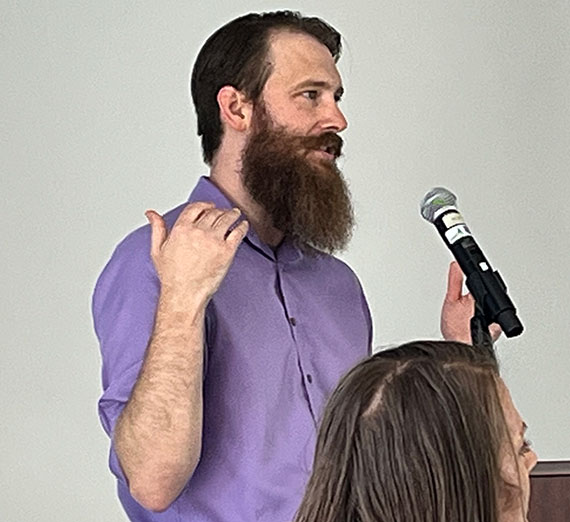Working with the Future: ChatGPT as a Writer’s Tool

When the artificial intelligence platform ChatGPT broke the internet last November, Chase Bollig was among the many who were excited and nervous for what its release meant for the future. But Bollig, who had been brainstorming an AI writing course since AI image generators started circling around in August, took ChatGPT’s release as an opportunity to bring his idea of making AI work for writers to life.
Bollig was initially worried ChatGPT would encroach on his arguments for the importance of composition writing classes, as ChatGPT was rumored to be able to compose emails and statements as a human would.
“It is exciting to be in a field that’s being disrupted by AI and thinking about how we can ride that disruption and do good work for the students to better understand their relationship with writing,” Bollig says.
His experience teaching the course showed him that AI requires working with the platform for it to function at its best, and that its limits are quickly reached when expecting the platform to do all of the work.
The class is designed so students serve as both research participants and researchers, asking themselves whether or not AI should be used while using AI. Bollig focused the class around using the students’ processes as an object of study, encouraging his students to engage in reflective writing about their experiences working with AI.
Normally when teaching first-year writing, Bollig is the acknowledged expert in the room, and the students view him that way. In his role as teacher, he provides “the scaffolding” that frames the activities and understanding of the class. Utilizing AI changed the teacher-student relationship he’s used to, Bollig says.
“I knew the theory, but ChatGPT is a brand new technology, so it was interesting to ask what they were going to do and then talk to them about that,” Bollig says. “Because they were active researchers with this emerging technology, they and I were a little bit closer on equal footing. I still had all the scaffolding, but we were able to discover things together for the first time and that was fantastic. I'd never had that experience before.”
Bollig found that students used ChatGPT mostly for academic assistance, such as developing research questions or confirming a sentence is grammatically correct. He also found that there was little correlation between good writers and good ChatGPT users, and that subject matter knowledge mattered a lot in determining whether ChatGPT was giving reliable and high- quality information.
“You have to kind of play with it back and forth to get it where you want to go. That move, that’s evidence of learning right there, that’s dialogue,” Bollig says.
Joe Baranowski, a student in Bollig’s spring course, said the class has enhanced his learning experience at GU by making studying more efficient. Baranowski mostly uses the interface for gathering ideas and narrowing research topics.
“This year, I continue to use ChatGPT. It truly is a great academic tool. The way we learned to use it in an academic way in this class was really helpful. There are so many different inputs that allow for outputs to be more comprehensive,” Baranowski says.
Bollig is teaching the course again this semester and likely will in the spring. He will then reexamine the course in light of what he has learned and how AI has developed.
